Since the second half of the 16th century, Bolognese learned surgeons – those who graduated in philosophy and medicine at the studio – began to be portrayed, just like physicians and natural philosophers. This process of (self)representation reflected the important cultural, political and civic status that learned surgeons had earned in the life of the city. In fact in Bologna, as well as in Padua, surgeons were part of the College of Physicians; therefore, they were key figures in the fields of healthcare and teaching. Moreover, surgeons played a very important role in the construction of the cultural identity of Bologna, because they performed the ritual of public anatomical dissections. Their portraits show the eclectic nature of their education and their practice. Among the most famous is Tiburzio Passarotti’s (1575-1612) portrait of Gaspare Tagliacozzi (1545-1599), in which the elegantly dressed learned surgeon sports the badges of the College of Physicians and holds in his hands a copy of his famous book on face reconstruction, titled De curtorum chirurgia per insitionem.
